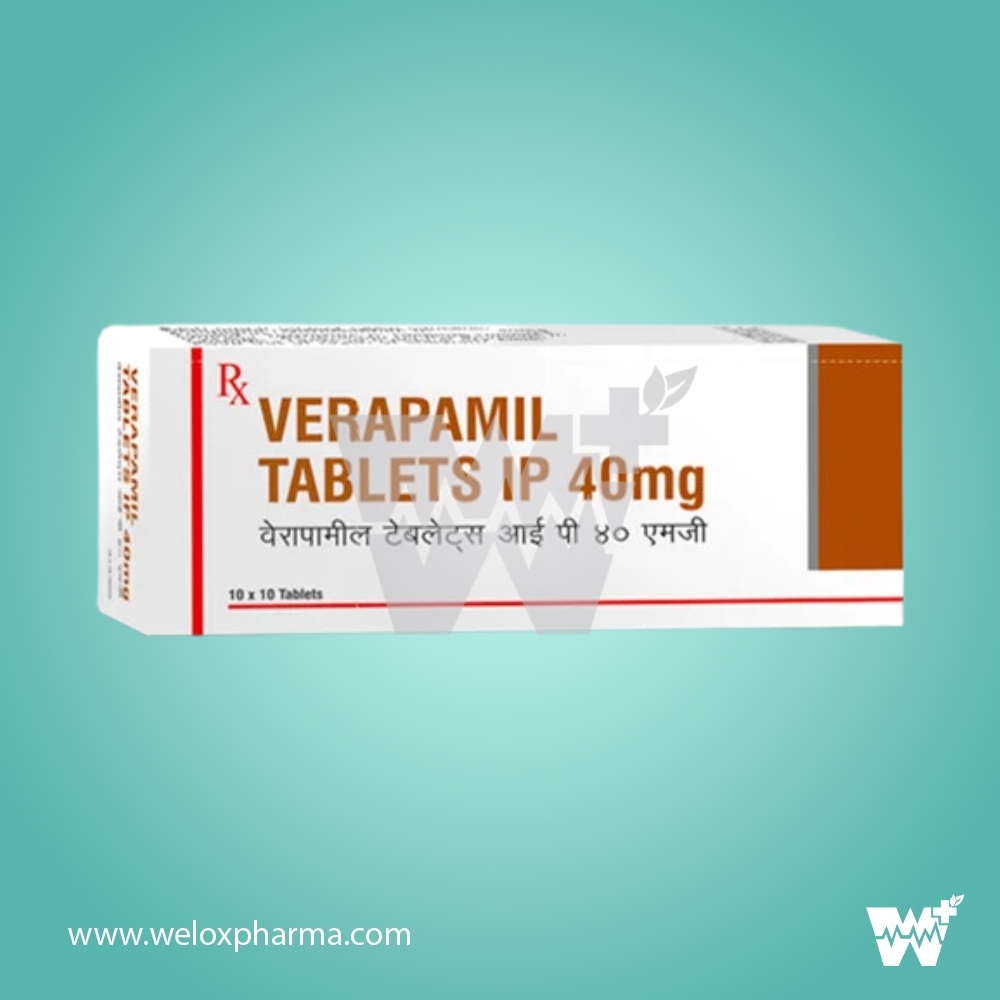



Introduction to Verapamil Tablets IP 40 mg
Verapamil Tablets IP 40 mg, provided by Lexaro Healthcare, are formulated to manage cardiovascular conditions effectively. As a calcium channel blocker, Verapamil is commonly prescribed to help control high blood pressure, alleviate chest pain, and manage irregular heartbeats.
Uses of Verapamil Tablets IP 40 mg
Verapamil Tablets IP 40 mg are indicated for:
Hypertension (High Blood Pressure): Helps lower blood pressure, reducing the risk of strokes, heart attacks, and kidney problems.
Angina (Chest Pain): Relieves angina by increasing blood flow to the heart muscle, thereby reducing chest pain and improving exercise tolerance.
Arrhythmias (Heart Rhythm Disorders): Used to treat conditions such as atrial fibrillation, atrial flutter, and paroxysmal supraventricular tachycardia by normalizing heart rhythm.
Benefits of Verapamil Tablets IP 40 mg
Effective Blood Pressure Control: Helps manage hypertension, reducing the risk of complications associated with high blood pressure.
Angina Relief: Provides effective relief from chest pain, improving the quality of life for those with chronic angina.
Heart Rhythm Regulation: Aids in the management of irregular heartbeats, promoting a more stable and regular heart rhythm.
Cardiovascular Protection: By controlling blood pressure and heart rate, Verapamil reduces the strain on the heart and blood vessels, lowering the risk of cardiovascular events.
Well-Researched: Supported by extensive clinical experience and research, ensuring its efficacy and safety in cardiovascular care.
Mechanism of Action of Verapamil Tablets IP 40 mg
Verapamil works by:
Blocking Calcium Channels: Inhibits the influx of calcium ions into cardiac and smooth muscle cells, leading to relaxation of the heart and blood vessels.
Reducing Heart Rate: Slows down the heart rate by affecting the electrical activity in the heart, helping to control arrhythmias.
Decreasing Myocardial Oxygen Demand: Reduces the workload on the heart, which is beneficial in conditions like angina where the heart muscle's oxygen demand exceeds supply.